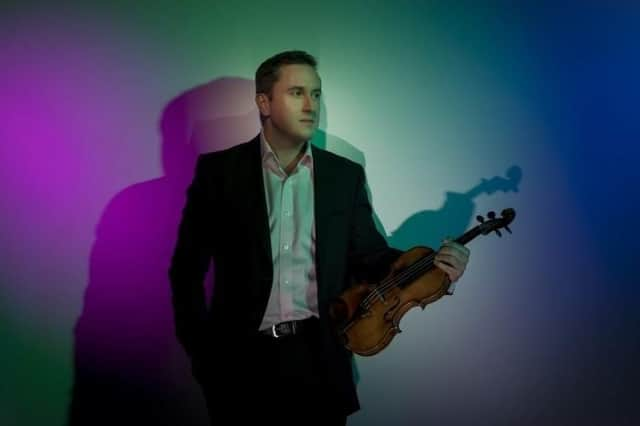Bournemouth Symphony Orchestra, Portsmouth Guildhall, review: ‘Flowed along beautifully in-sync’


The opening work was Valses nobles et sentimentales by Ravel which references two sets of piano waltzes by Schubert. The seven waltzes and an epilogue, originally for solo piano, were subsequently orchestrated for the ballet Adélaïde. In his typical orchestrative style they intermingle nobility and sentiment, light and dark. At the very end the celesta is used like a clock chiming to mark the passage of time – warm sounds for a cold night.
The first half continued with the 2nd piano concerto by Saint-Saëns superbly performed with internationally renowned pianist Benjamin Grosvenor. The first movement opens with a solo piano improvised section rather in the style of a Bach fantasia. Throughout the soloist was commanding with great technique, musicality and spell-binding pianism, especially in the cadenzas, perhaps making the work seem rather greater than might often appear in performance; the BSO flowed along beautifully in-sync. A real treat.
Advertisement
Hide AdAdvertisement
Hide AdPrior to the interval Mr Grosvenor performed a short but jaw-droppingly impressive encore which as yet I have been unable to identify.
The second half of the concert was Rachmaninov’s Symphonic Dances, a late work of 1940 described by the composer as a ‘last spark’, albeit a most successful one. The first dance quotes from his first symphony, repeating elements from Russian church music; the second dance is a tempo di valse featuring unsettling stopped horn notes and brief solos for violin and cor anglais; the third quotes from All-Night Vigil to represent resurrection in a struggle with death as in the plainchant from Dies Irae. The extensive orchestration which unusually includes an alto saxophone solo, gives all sections of the orchestra a chance to shine. A triumphant climax – but who won? We did.